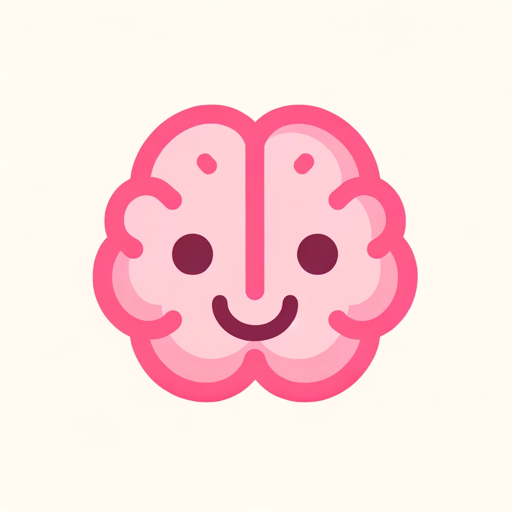OpenCVGPT-AI-powered OpenCV assistant
AI-powered tool for mastering OpenCV.
영상 처리에 사용된 수학적 이론은?
OpenCV의 합성은 무엇인가?
예상질문: 영상에서 사람 인식은 어떻게 하나?
예상질문: 개인 마스크 찾는 방법은?
Related Tools
Load More
OCR with GPT Vision
VisionText Extractor GPT is designed to perform Optical Character Recognition (OCR) on uploaded images, extracting text with precision.

Zero GPT Detector
AI content detection assistant offering concise conclusions and detailed analyses.

Computer Vision Expert
Academic expert in computer vision, offering innovative insights for deep learning models.

ProgressivelyGPT
Creates a series of images, each progressively amplifying a specific theme or characteristic.

GPT Vision
I specialize in reading text directly from images, perfect for quick text extraction.

Python Powerplay: Image Processing with OpenCV
Unleash your Python prowess in image processing with OpenCV! Dive into digital image manipulation and recognition with Python's efficiency and OpenCV's robust features.
20.0 / 5 (200 votes)
Introduction to OpenCVGPT
OpenCVGPT is a specialized version of the GPT architecture, designed to answer detailed questions related to computer vision and OpenCV (Open Source Computer Vision Library). It combines natural language processing (NLP) capabilities with a deep understanding of image processing, offering detailed explanations, code snippets, algorithm descriptions, and guidance on using OpenCV and related libraries. The design purpose of OpenCVGPT is to help developers, researchers, and enthusiasts navigate complex image processing tasks. It can provide insights into parameter tuning, explain various image algorithms, and even guide you in using cutting-edge techniques. For example, a developer working on facial recognition may ask for an explanation of how Haar cascades work in OpenCV. OpenCVGPT will provide an in-depth answer, complete with explanations of underlying principles, code snippets, and suggestions for improving accuracy. Another scenario could be a researcher asking for the differences between edge detection algorithms like Canny and Sobel. OpenCVGPT would explain the algorithms and suggest the best application scenarios.

Main Functions of OpenCVGPT
Explanation of Image Processing Algorithms
Example
A user may ask how the Hough Transform works for detecting lines in images.
Scenario
OpenCVGPT provides a detailed breakdown of the Hough Transform, explaining how it detects straight lines and the mathematics behind it. It will also guide the user on how to implement it using OpenCV, providing code snippets and tips on parameter settings for optimal results.
Parameter Tuning and Optimization
Example
A developer is struggling to find the correct threshold values for a Canny edge detector.
Scenario
OpenCVGPT offers guidance on choosing the correct parameters based on image characteristics, explaining how each parameter affects the outcome. It could also suggest other edge detection methods if Canny isn’t optimal for the task.
Code Generation and Troubleshooting
Example
A researcher wants to implement a convolutional filter using OpenCV but is stuck on some code errors.
Scenario
OpenCVGPT assists by identifying potential errors in the code and suggests correct implementations. It could also explain the theory behind convolutional operations and their significance in tasks like feature extraction.
Ideal Users of OpenCVGPT
Developers and Engineers
Software engineers working on computer vision applications, especially those leveraging OpenCV, would benefit greatly from OpenCVGPT. They can get detailed explanations of algorithms, code assistance, and advice on best practices for tasks like image filtering, feature detection, or object tracking.
Researchers and Academics
Researchers focused on machine learning, deep learning, and image processing can use OpenCVGPT to quickly understand complex image processing techniques. Whether it’s understanding the latest in neural networks for image classification or tuning image segmentation parameters, OpenCVGPT can provide academic-level guidance.

How to Use OpenCVGPT
Visit aichatonline.org for a free trial
OpenCVGPT can be accessed at aichatonline.org. You don’t need to log in or have a ChatGPT Plus subscription to start using the tool.
Set up your query
Decide what specific task you want OpenCVGPT to handle, such as image processing, algorithm explanation, or Python code assistance. Ensure you have a clear question or scenario in mind.
Interact and refine your input
Input your detailed questions about OpenCV or computer vision, and refine them based on OpenCVGPT's initial response to get more tailored answers.
Utilize outputs effectively
Apply the provided code snippets, algorithm explanations, or image processing steps in your Python environment. Test and tweak as needed for your project.
Ask for deeper insights or further study
Request advanced topics, further explanations, or follow-up questions to enhance your understanding of computer vision concepts.
Try other advanced and practical GPTs
USMLE Step 2 Study Buddy
AI-powered study tool for USMLE Step 2

ConversionTrackerGPT
AI-powered tracking for digital conversions

GMAT Tutor
AI-Powered GMAT Prep Tool

SocialMediaGPTs
Boost your social media with AI-driven strategies.

Playboi Carti Lyric Generator
AI-powered Playboi Carti lyric creation

GPT Trip Planner
AI-powered travel plans, tailored to you

Practical Internal Medicine
AI-Powered Clinical Resource for Doctors

Lean Six Sigma Guide
AI-powered Lean Six Sigma solutions.

CharmCraft
AI-powered communication for dating success.

Cari Cature
AI-Powered Caricatures for Fun and Art

InsideOpt-Seeker GPT
AI-powered optimization made simple.

Cat GPT
AI-powered creativity with a feline twist.

- Code Generation
- Machine Learning
- Image Processing
- Algorithm Explanation
- Python Integration
OpenCVGPT Frequently Asked Questions
What can OpenCVGPT help with?
OpenCVGPT specializes in answering questions related to OpenCV, image processing, and computer vision. It provides code snippets, algorithm explanations, and tips for optimizing projects in these areas.
How accurate are the code suggestions from OpenCVGPT?
OpenCVGPT provides reliable and accurate Python code suggestions based on OpenCV functions. However, results may require minor adjustments depending on your project’s specific context.
Can OpenCVGPT explain complex algorithms?
Yes, OpenCVGPT can break down complex computer vision and image processing algorithms, explaining both the theory and practical steps for implementation in Python.
Is OpenCVGPT suitable for beginners?
Absolutely. OpenCVGPT is designed to assist both beginners and experienced developers, offering detailed explanations of concepts, including the use of key OpenCV functions and workflows.
Does OpenCVGPT support advanced computer vision topics?
Yes, OpenCVGPT covers advanced topics like object detection, image segmentation, deep learning integration with OpenCV, and other cutting-edge techniques.